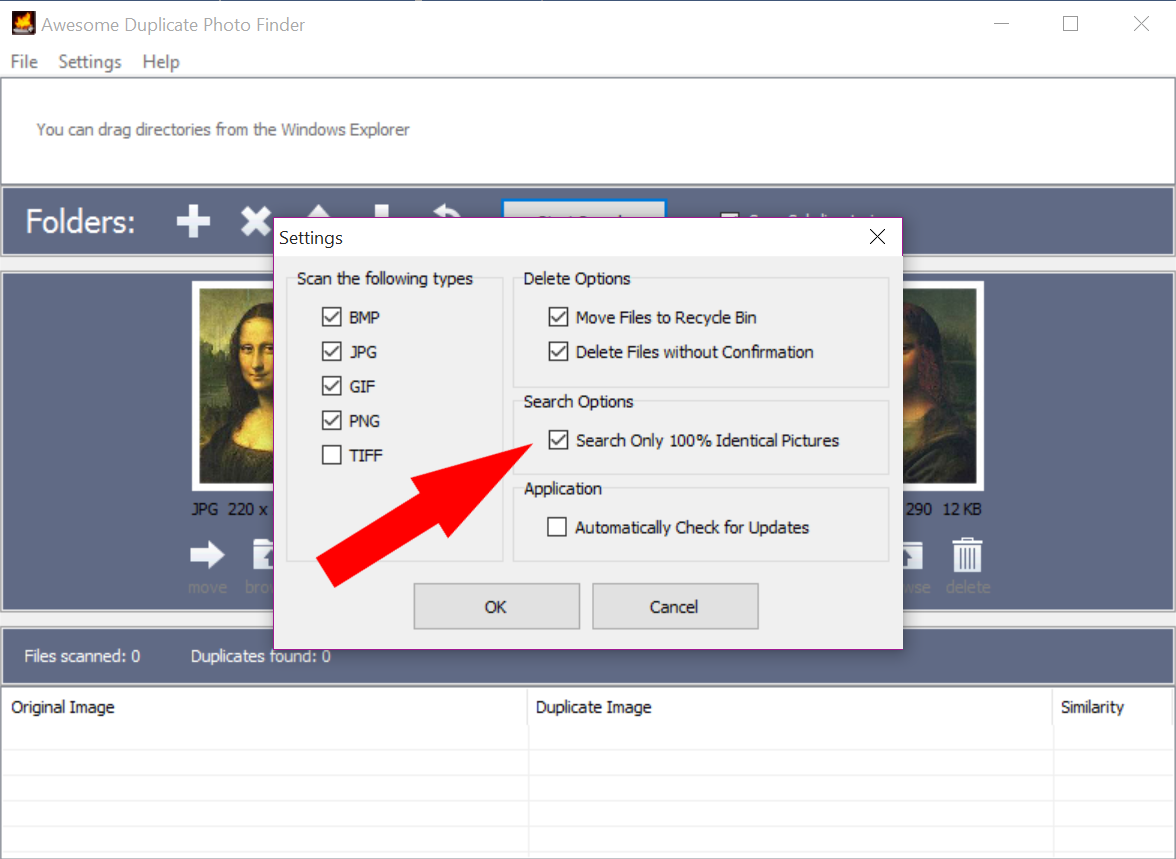

As a result of this action, all the picture-files in Test Folder 3 (see the image below) won’t be touched, and the images in the remaining scan location(s) that are the exact/ similar match to the images in Test Folder 3 will now be automatically selected for the next action. Once the folder has been added, select it and click Unmark. Simply click the Select by image locations option and then use the Add button to add the folder which shan’t be subjected to picture deletion/move to folder action. If you’ve scanned several folders in a single scan, you can use this option if you want images in a particular folder to be left untouched. The only option that requires a little detailing is the Select by image locations one. It provides you a 1-stop solution, where you can select the images at a single click, rather than selecting every single photo individually. The Select Duplicates menu is a much faster and easier option. Now you can either manually select the images which you wish to delete/backup to a folder by clicking the checkbox before each image’s name or use the Select Duplicates menu (far-right corner of the footer).

The footer of the PictureEcho user interface will be relaying handy info on the results compiled by the scan.

You can click any image and the Preview Area will bring up its preview and also provide useful metadata information about the image. The important point to note over here is that each group comprises of the same/ similar (as the case may be) kind of images corresponding to a single image. When the scan is over, all the duplicates/ similar images will be listed out in a group format. Finally, click Start Search to launch the scan. Now back to the action, you can select the Show Preview checkbox if you want to view the preview of an image that has been detected in the scan.
BEST IMAGE DUPLICATE FINDER WINDOWS
These locations include critical directories which must not be scanned, or you run the risk of critically damaging Windows files. The Excluded Folders tab shows locations that have been omitted by default from all scans. Please note that as of now, raw images can only be scanned in the Exact Match mode. The Included Extensions tab shows the image types that will be scanned in both the Exact Match as well as Similar Match scenarios. Choose the scan type of your choice and click OK. Basically, the similar photos scan is of 4 types, and the following image explains each of them in a very easy-to-understand manner. If you’re going for the Similar Match scan, click the Similarity Settings link to open up the Settings window where you can select the scan of your choice. Similar images are those images which even the naked eye can detect to closely resemble each other, but not close enough to be classified as exact duplicates. Exact duplicates are pictures that match each other bit by bit, pixel by pixel. Next, you have to choose whether you want to scan for exact duplicates or similar ones. If you’ve mistakenly added a directory, just select it in the address box which is showing all the locations that have been lined up for the scan, and click Remove Path. Let’s look at the goodness provided by PictureEcho.Ĭlick the Add Path button to easily add as many locations as you want for a single scan, and PictureEcho will happily take care of the rest.
BEST IMAGE DUPLICATE FINDER SOFTWARE
We’ve laid out the functionality of this software in the following lines. The whole process gets accomplished in 3 steps, namely selecting the target location, choosing the scan mode, and then launching the scan. This mode is for scanning folders/ hard drives/ external drives/ USBs or even networked locations.


 0 kommentar(er)
0 kommentar(er)
